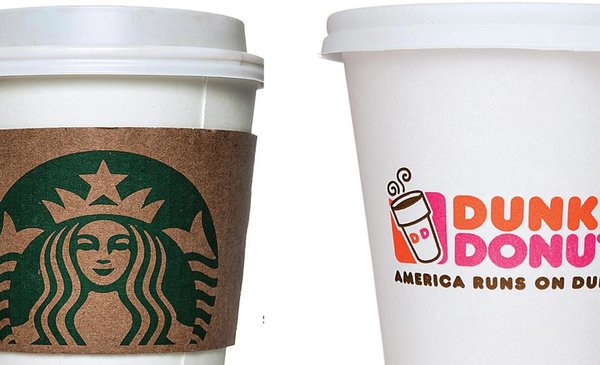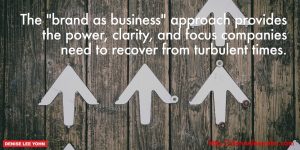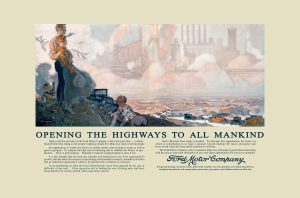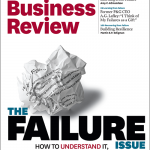
As Simon Sinek has observed, people intuitively deal with what they know before they deal with the things they don’t know or feel less comfortable dealing with. The easiest question, and the place most people start is “what?” They deal first with the symptoms they can see and quantify. And often they address them with a “how” that is equally familiar – the methodology they always use.
But while a particular problem may have set off the trip-wire, in reality that problem is probably a symptom of what’s really happened rather than the real cause.
It’s the prompt.
And just having a way to address that problem does not guarantee any quality of answer. It simply provides a process for everyone to map to.
Do you know the story of Abraham Wald? His reasoning shows why what you think you see can be so misleading. The mathematician was called in to determine how to make bombers safer during the Second World War. Everyone agreed they needed more armor. But where? Armor is heavy. If you put it everywhere, the bombers would never get off the ground. The answer seemed obvious. Put the armor where the planes were being shot the most. So Wald went to work and sketched all the places where bombers returning from their runs were most shot up.
But then, in his analysis of the situation, Wald turned everything on its head. The areas of most apparent damage were not the problem, he concluded, because they appeared on planes that made it back. The real areas of vulnerability on a bomber were those areas that weren’t marked – because planes shot there were the ones that never made it home.
Wald’s wonderful insight was to resist the temptation to ask, “what am I looking at?” and to ask instead “why can I see this?” Which leads us to this timely marketing point; when grappling with marketing issues don’t veer towards what you understand. What you need to do is set a course for what truly isn’t making sense.
Overcoming brand challenges is hard as is navigating change, but it’s certainly easier with the help of others. In early May, 50 marketers will converge at marketing’s only problem solving event to take on the obstacles of now and prepare for what’s next.
The Blake Project and Branding Strategy Insider have designed a uniquely powerful experience for brand leadership in the age of disruption. We call it The Un-Conference: 360 Degrees of Brand Strategy for a Changing World.
It’s unlike any other branding or marketing conference you’ve attended before:
- Everyone in the room is an expert and gains from the sum of the expertise in the room.
- Our competitive learning format is fun, energized and impactful.
- The walls are down, there are no podiums or stages, there is no hierarchy – your uniform is jeans.
- The focus is on learning outcomes, not ticket sales.
- Small is powerful, with only 50 marketers participating in hands on learning.
- As in your marketplace, some will win, some will lose, all will learn.
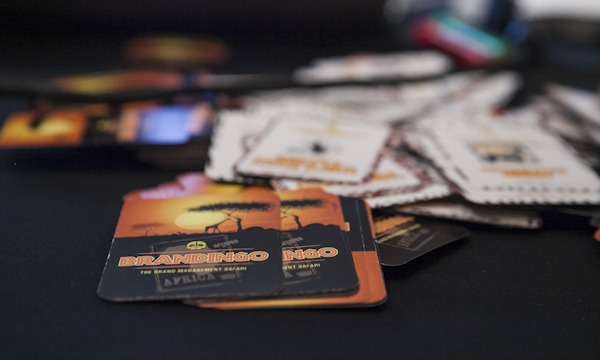
No Attendees. Only Participants.
The best pathway for learning is through participation, not observation. The Un-Conference: 360 Degrees of Brand Strategy for a Changing World will challenge your thinking about brands and brand management. To do that, we’ll put you on a team of 10 and offer you opportunities to compete and learn alongside other marketers in a unique environment. The challenges you’ll tackle are based on and influenced by the actual issues that you and other participants are facing.
In May of 2017, our 5th event, we are focused on: Disruptive Marketing Trends, Building Emotional Connections, Encoding Brands In The Mind, Brand Storytelling, Brand Leadership, Digital Strategy, Customer Experience, B2B Brand Strategy and more.

It all takes place at The London Hotel in West Hollywood, California May 1 – 3, 2017.
Our schedule…
Monday, May 1st – Kickoff Mixer: 7- 9pm at The London Hotel Rooftop Pool
Tuesday, May 2nd – Day 1: 8am – 5pm, at The London Hotel / 6:30pm – ? Team building event and dinner
Wednesday, May 3rd – Day 2: 8am – 5pm, at The London Hotel
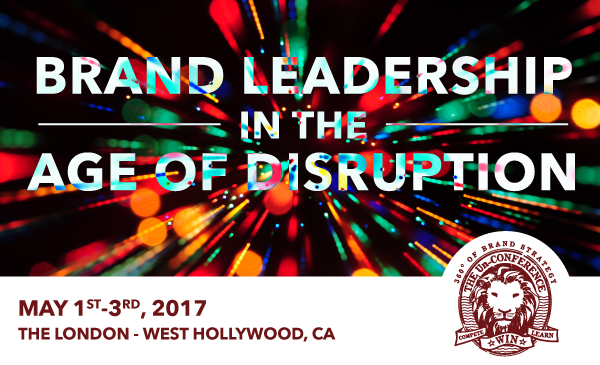
Who Should Participate?
We have reserved these two days (and a kickoff mixer on the evening of the 1st) for 50 senior B2C and B2B marketers who see professional growth as a mandate for success and who seek a learning experience superior to last century’s format of marketing conferences:
-Marketing oriented leaders
-Marketing professionals (brand managers, product managers, directors, vice presidents, CMO’s, brand strategists etc.)
-Advertising agency professionals (account executives, planners, creatives, agency heads)
-Marketers facing brand strategy issues
-Marketers seeking a competitive advantage
-Professionals in charge of brand building, brand management, human resources
-Professional brand consultants, digital consultants and researchers
-Marketers who prefer participation over observation
-Marketers who don’t believe that last century’s format of marketing conferences advances them as leaders.
Every year a wide range of marketing oriented leaders and professionals from around the world join us representing startups, emerging, regional, national and global brands. Past participants include AAA, Bayer, Bloomberg, Humana, Land O’ Lakes, Liberty Mutual, Pilot/Flying J, RJ Reynolds, TD Ameritrade, GlaxoSmithKlein, Wounded Warrior Project, Monsanto, Ogilvy, Kawasaki, GE and many more.
Only 50 marketers can participate. To secure a spot for you or your group at The Un-Conference: 360 Degrees of Brand Strategy for a Changing World call me directly in Los Angeles at 813-842-2260. Or simply email me.
Special pricing for MENG / Marketing Executives Group and American Marketing Association Members.
I do hope you can join us.
Sincerely,
Derrick Daye for The Un-Conference, Branding Strategy Insider and The Blake Project



